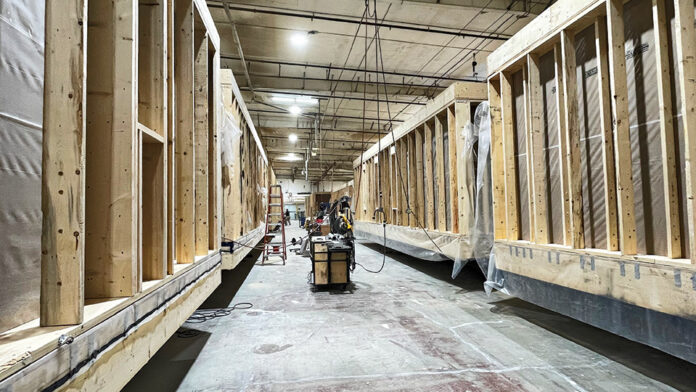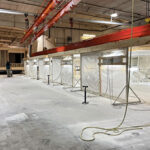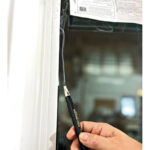By Natasha Rombough, Director, Marketing and Communications, CHBA
Questioning the “productivity” of the homebuilding industry – or lack thereof – has been bounced around in the media of late. Statistics Canada published data showing that the construction sector is lagging behind other business sectors when it comes to labour productivity. And while there is a general misunderstanding of the issues around productivity in our sector (which CHBA is working to correct), given Canada’s shortage of both housing supply and skilled workers, stagnant productivity does pose a serious problem.
To increase productivity, we must do more with less. CHBA’s Sector Transition Strategy (STS), which we published in February 2024, presents the challenges and solutions to overcoming Canada’s barriers to doubling housing starts, and some of those opportunities are rooted in the benefits of factory-built homes, including modular construction methods and panelization. The STS garnered widespread interest with both federal politicians and public servants, and Budget 2024 contained several measures taken directly from recommendations in the STS.
Government action
While governments are enamoured with modular construction as a solution to the housing shortage, moving to more factory- built construction is a complex business proposition. CHBA’s goal with the STS was to explain the substantial barriers to widespread adoption, which include high risks associated with the high capital cost investment required to set up a factory, with high overhead – a particularly risky situation in the boom-bust nature of the housing market. The STS begins by focusing on the policy and regulatory fixes needed to build more housing in general, and provides a path forward to upscaling the technology involved, which can benefit site-builders as well.
Armed with solutions coming directly from our members, the federal government used the STS to make numerous announcements benefitting modular construction in the Budget. This included a focus on Industrial Strategy and Supporting Innovative Housing Technologies. Part of this strategy is the development of an industrial strategy for homebuilding, which is underway. CHBA CEO Kevin Lee was requested by federal Minister for Innovation, Science and Industry of Canada, François-Philippe Champagne, and Housing Minister Sean Fraser, to be one of five expert members of a consultation panel. On the panel, CHBA was a strong voice for the sector and provided valuable information to policymakers on how to set the stage to enable more factory-built construction.
One of the major barriers to more factory- built construction is a lack of understanding of the factory side of the process by building officials, and a resultant duplication of inspections. CHBA has raised this issue and is therefore glad that the National Research Council (NRC) is being tasked with finding ways to reduce duplication between factory inspections of modular home components and on-site building inspections.
NRC has also been tasked with supporting efforts to address regulatory barriers to help scale up factory-built housing. CHBA is taking advantage of this through an air-tightness testing project supported by NRC, which will help reduce the costs of testing for modular units going to remote locations (more details below).
Budget 2024 also announced two $50-million initiatives to support industry moving to more factory-built solutions. “CHBA was very pleased with the measures announced in the 2024 budget to support modular construction, but our advocacy related to factory-built construction doesn’t stop there,” says Lee.
“The stick-built housing industry in Canada is well adapted to the ebbs and flows of what has historically been a pattern of boom and bust cycles,” he adds. “If we are to transition a large part of the sector to factory-built construction, there are many barriers to overcome. In addition to helping to de-risk the high start-up costs, we need consistent demand to keep the factories moving and people employed, and financial institutions to better understand the business model and offer more helpful financing solutions, which we are starting to make some ground on.”
Improvements to homeowner financing
CHBA continues to call for improved zoning to support gentle densification, including laneway suites and other Accessory Dwelling Units (ADUs), which are often ideal candidates for modular construction, as well as improved financing for factory-built homes. These recommendations have been important pieces of ongoing advocacy work, including CHBA’s annual Day on the Hill.
Our advocacy resulted in the federal government’s October announcement to allow homeowners to refinance their current mortgage and construct a secondary suite, with borrowers able to access up to 90 per cent of the home’s value, including the value of the extra suite. The borrower will be able to amortize the refinanced mortgage over a period of 30 years. The federal government also said it is increasing the mortgage insurance home price limit to $2 million for those refinancing to build a secondary suite. This will be of value to both our modular and renovation members.
In September, CHBA co-hosted a webinar for members with RBC on getting more buyers into the market. RBC shared their mortgage solutions for through their Construction Mortgage Program. One of the new additions is retail owners purchasing these homes through a Preferred RBC Builder that will continue to reside there now have access to construction draw mortgage financing (as opposed to just purchase single draw transaction previously). This means a modular/manufactured homebuilder can receive payment in multiple tranches. Members can watch this webinar on demand at
chba.ca/webinars.
Shaun Scrupps is general manager of SRI Homes, which has several locations in western Canada, and is under the Champion Canada Modular Ltd. Umbrella, which includes SRI and Moduline. Since SRI was founded in 1978, the company has built more than 45,000 homes. Scrupps says the new RBC financing is already proving helpful to homeowners. “Shelter Home Systems SRI are a preferred manufacturer with the new RBC program, and some of our retailers have gone through the process as well. In the past three months, one retailer identified four sales that were closed under this program that may have been lost previously for financing issues.”
There is still room for improvement when it comes to homeowners receiving comparable financing options for factory-built homes as traditional site-built construction, but things are improving.
Common sense testing
We know that factory-built homes can deliver the same – or better – airtightness as site-built homes. However, in addition to required blower-door testing on site, some factories also conduct an additional test in the factory to ensure a quality product. While the airtightness of manufactured houses is not expected to vary greatly as a result of transport, data is lacking on validating this assumption that would support a code change to allow “in factory” testing for single-section modular units.
CHBA received funding from the National Research Council (NRC), to compare results of in-factory air-tightness testing versus in-place testing. The objective of this project is to understand how the transport of manufactured houses from the factory to their destination affects the measured airtightness performance to inform a code change request for an exemption from on-site testing for single modular units.
Keith Herring, director of modular construction at CHBA, says this project stems from the strategic planning session that members of the CHBA Modular Construction Council participated in last year. “Compiling data to support our recommendations on how to address the challenges that factories face was a big part of our strategic planning session. In general, Canada needs more empirical data before making building code changes, and this project is exactly the type of investment that needs to be made in order to make factory-built housing more productive and affordable.”
The goal is to get a code change that won’t require on-site airtightness testing for single-section modular homes, which will save time and money for factories, making the end product more affordable to homeowners. It would also benefit homes delivered to very rural and remote areas, where it’s difficult to do on-site testing due to the lack of available Energy Advisors and the high cost of travel and accommodations to bring one to the site.
For the project, CHBA will coordinate the in-factory and on-site testing of 75 different homes across Canada in different climate zones. All testing and project administration costs are covered by the NRC funding.
SRI Homes is one of the participating factories, and Scrupps says that there are several advantages to performing air tightness testing in the factory. “Blower door testing in the factory has allowed us to refine our product quality and guarantee product performance, ensuring passing results in the field which avoids costly interventions and delays. Additionally, it allows us to look ahead to future code requirements over the next 10 years, all the way to net zero efficiency, and it will become a marketing item for our sales teams.”
“The hope is that this will be the first of a multi-phase project that can be expanded to homes with basements or two-section products, followed by multi-section modular homes and eventually multi-unit residential buildings (MURBs),” Herring says.
It’s just one of many changes that can be made to make the business case for incorporating more factory-built homes into Canada’s housing stock. Change has to start somewhere, and CHBA and its members are leading the efforts.

















